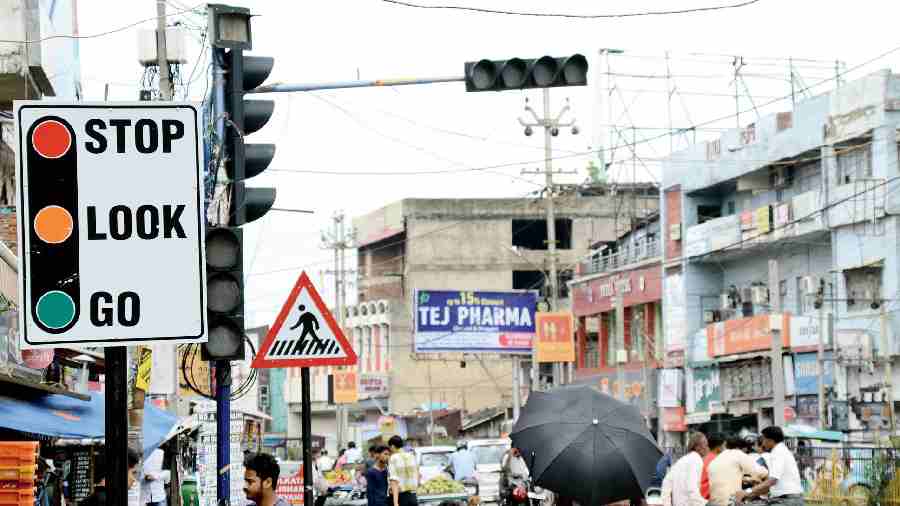The city police have sought help from Google for tailor-made signal-wise time cycles of traffic signals that could reduce the waiting time of vehicles at signals. Kolkata police have shared the coordinates of 123 traffic signals in north Kolkata with Google.
The company will assess the volume of traffic at each of these signals at different times of the day and share its feedback on the duration of signal-cycles, police said.
Transport experts said the project could lead to optimisation of traffic signals and increase the overall efficiency. The traffic signals whose details have been shared with Google are between Girish Park and the Shyambazar five-point crossing and between Shyambazar and Ultadanga.
“We are trying to create a signalling system to accurately calculate the time-cycle of the traffic signals depending upon the assessment of traffic volume on that particular stretch. If this can be achieved, this will minimise the waiting time of vehicles at signals,” said deputy commissioner (traffic) Sunil Yadav.
Now, the duration of the cycles at each signal is calculated manually. Several countries have introduced a traffic system with embedded sensors to assess the volume of traffic, which can automate the timing of the traffic lights.
Bhargab Maitra, IIT Kharagpur professor, who specialises in transportation engineering, said embedded sensors would be effective only in cities where motorists mandatorily follow lane driving.
“This project has failed in multiple cities in India but is running successfully in European countries because they follow lane driving... Seeking help from Google could be a good option for optimising the city traffic efficiency,” he said.
Traffic police officers said at present, police vehicles ply between two signals or two major intersections to calculate the time taken to cover the stretch in the north-south direction on a periodic basis. Similarly, the time for covering the east-west stretch is also calculated manually.
“Depending on the average time taken to physically cover these stretches, the duration of that particular traffic cycle is fixed,” an officer said.
However, it is often spotted that the manually calculated time is either inadequate or in excess compared to the volume of traffic.
“Sometimes we see that the signal in the north-south direction is green but the stretch has few vehicles, while a long queue has lined up in the east-west direction. With the help of Google, which can assess the traffic volume through its satellites, we are expecting more accurate timings,” said an officer.
An officer said they were expecting Google to share its findings by the end of the year.
